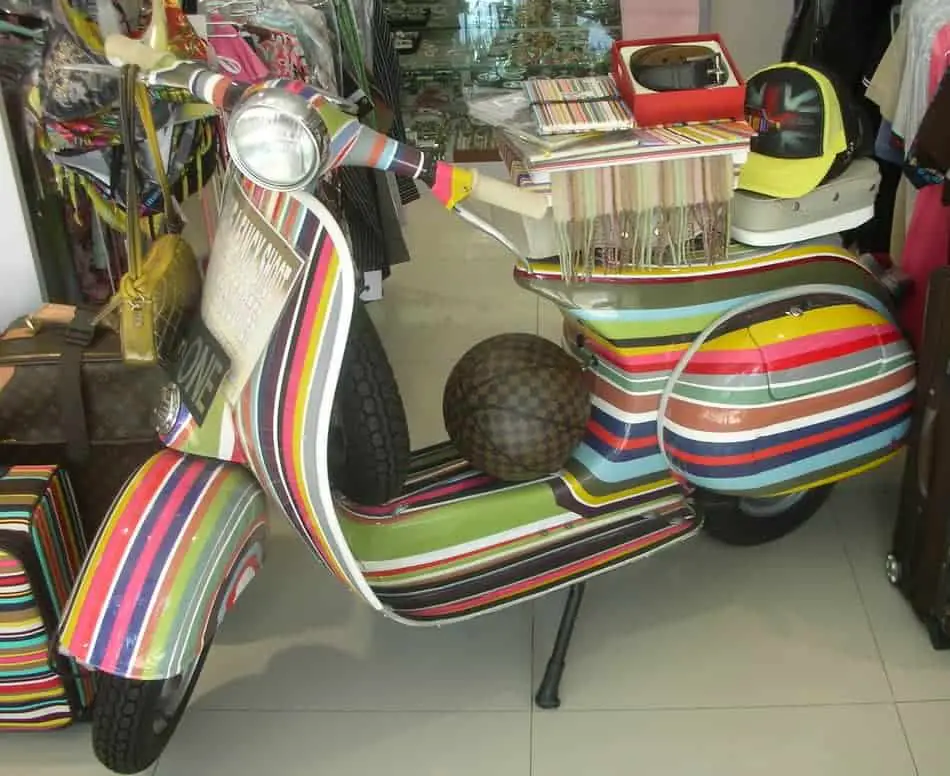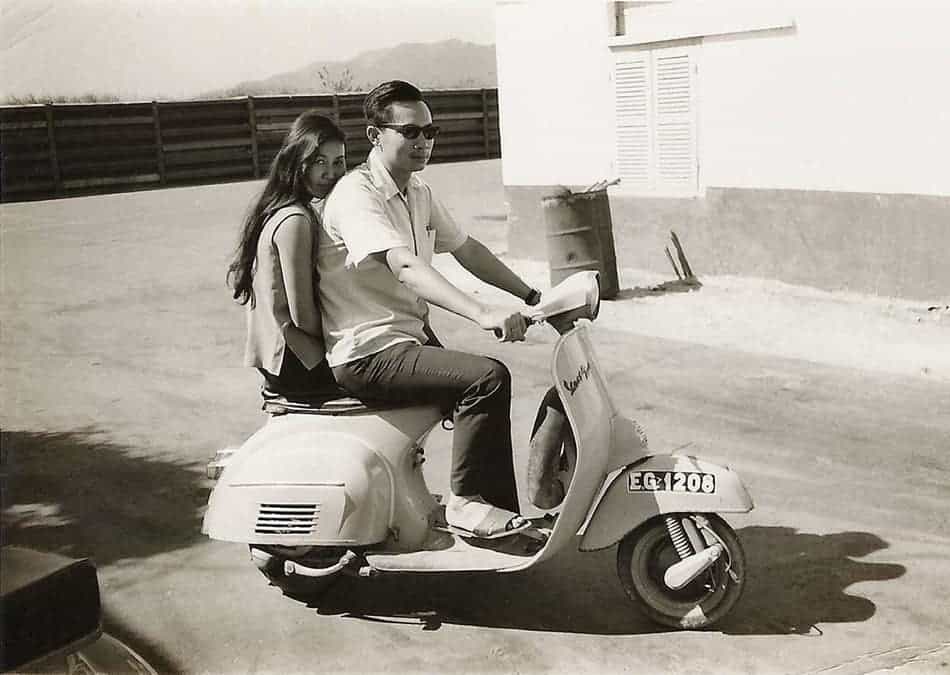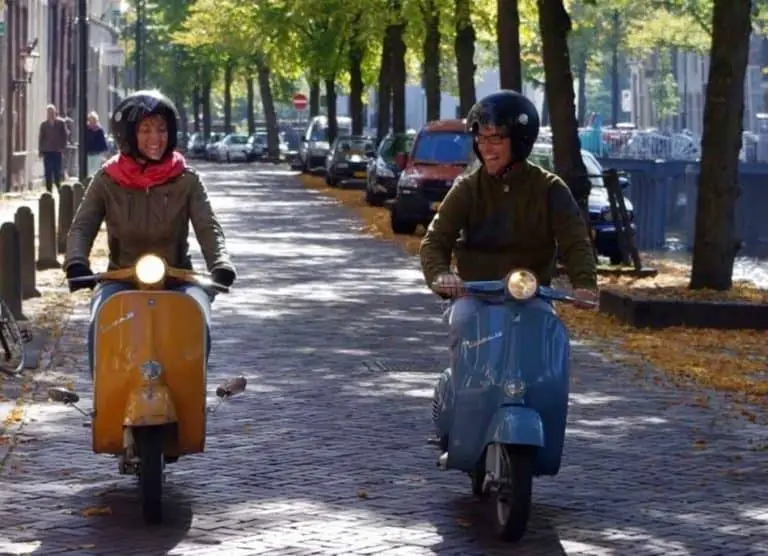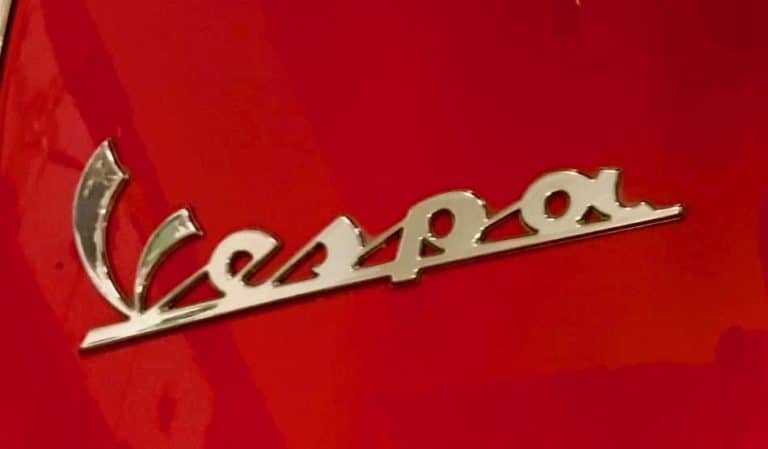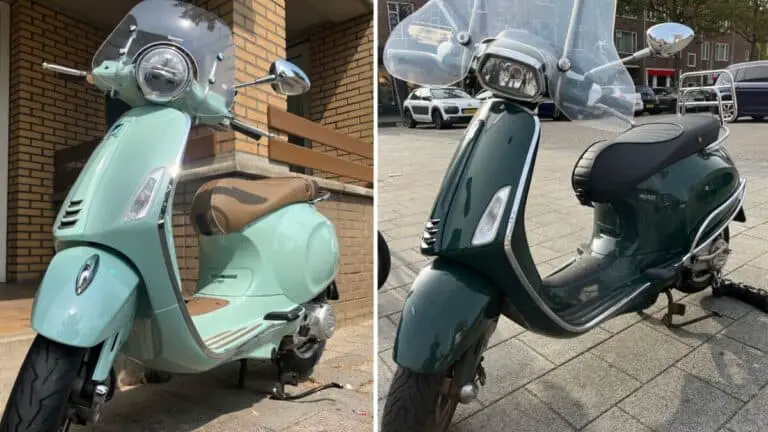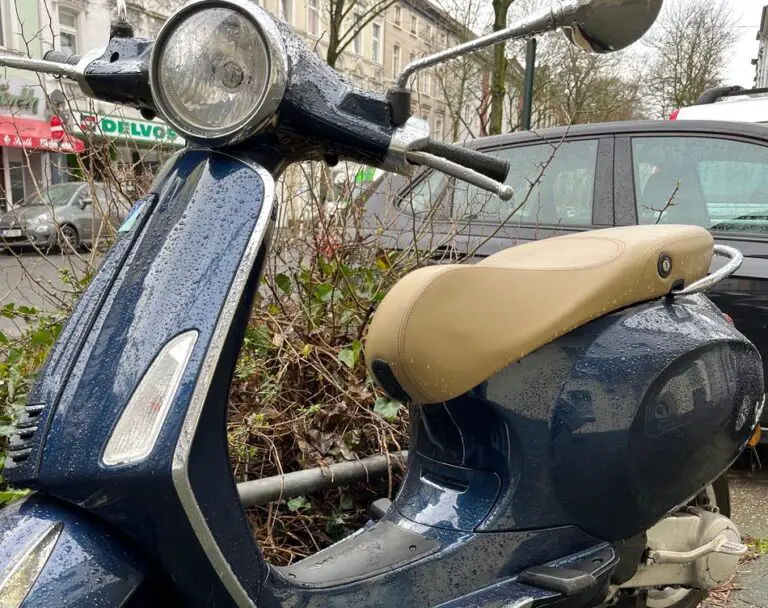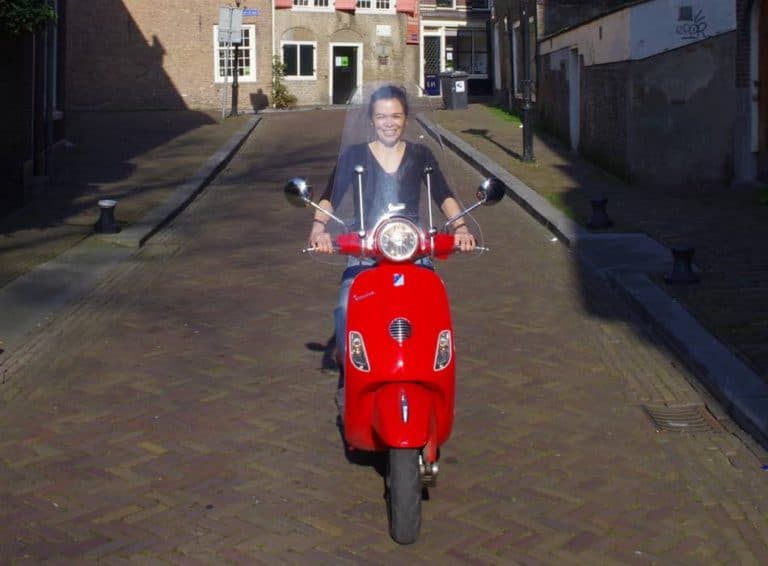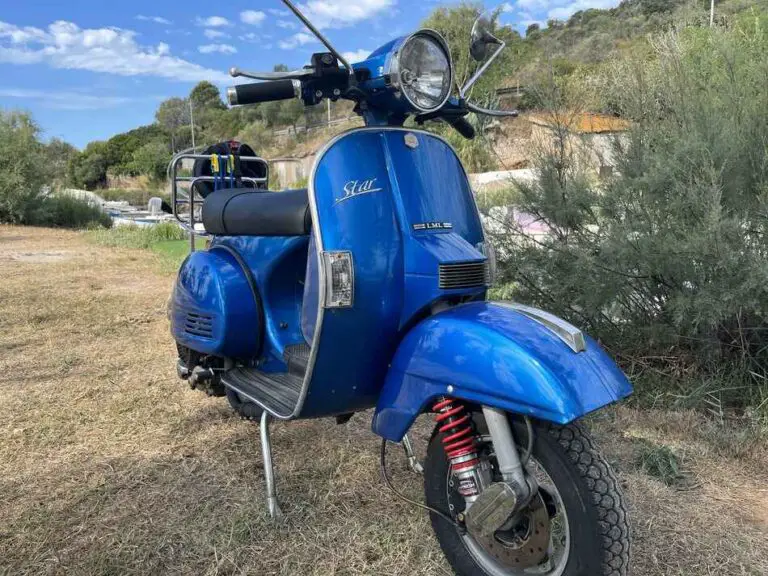How To Tell If A Vespa Is From Vietnam? 22 ways to know for sure
When you are on the lookout for buying a classic Vespa you might wonder if it’s a genuine Italian model or a fake one imported from Vietnam. To the trained eye, there are many things where it shows you are dealing with a Vietnamese model.
After doing a lot of research on the Internet I have compiled a list of 22 items so you can tell if a Vespa is from Vietnam.
1. There is a lot of rust because of climate conditions
Just bear in mind that it’s practically impossible to find a real classic 50-year-old Vespa from Vietnam. Due to its tropical location, Vietnam has an average humidity of 80% which means a lot of rust. They also have a summer monsoon and winter monsoon with an average rainfall of 700 to 5,000 mm (28 to 197 in). Because of the weather, there are many potholes in the road which have had a huge impact on classic Vespas.
On top of that Vietnam’s coastline stretches for 2,030 miles (3260 km) and most cities are located near the coast with salty winds. These factors are not in favor of anything made out of steel, let alone classic Vespas. Rust is everywhere but you can’t see it.
2. The two-color tone of the Vespa
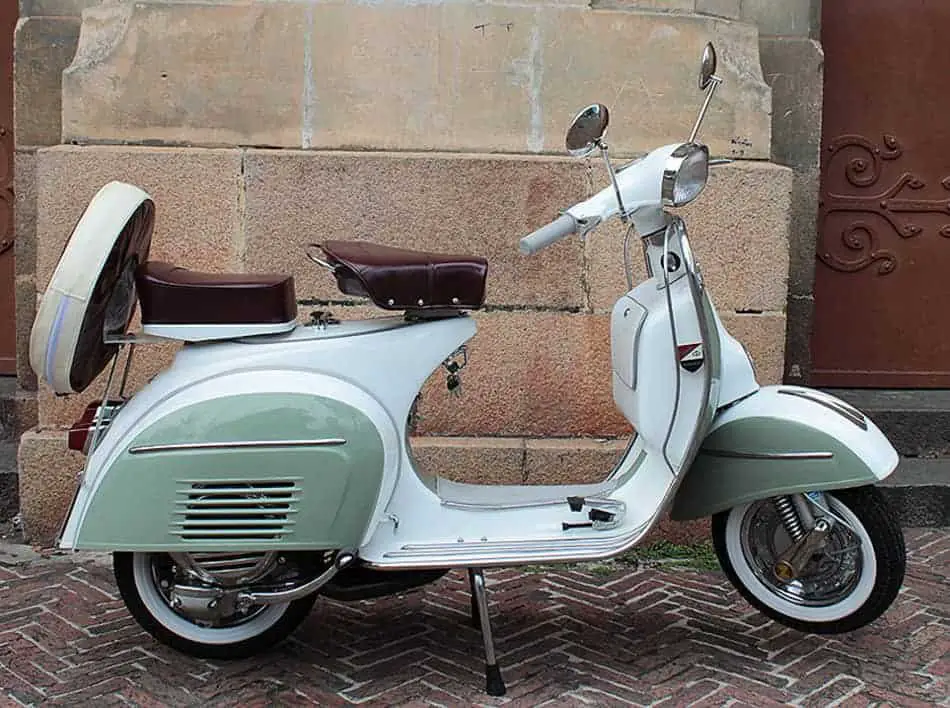
The two-color tone is an obvious example we are dealing with a classic Vietnamese or Asian Vespa. You’ll see all kinds of color schemes while Piaggio has never produced a multi-colored Vespa. Only recently did they came up with the Sean Wotherspoon Primavera but never ever has Piaggio produced a classic Vespa in blue/white, vanilla/brown, red/black, or other variations.
On these Vespas, you’ll often see that the mudguard, the cowls, and steering column come in a different color, mostly in white. Furthermore, if it’s not painted in the two-color tone it’s painted in other hideous over-the-top colors.
Nowadays the shops selling these ‘classic’ Vespas have become ‘crafty’ and are using original Max Meyer colors but please be aware. The paint looks good but you don’t want to know what’s hidden underneath.
3. Chrome plating and accessories on the scooter
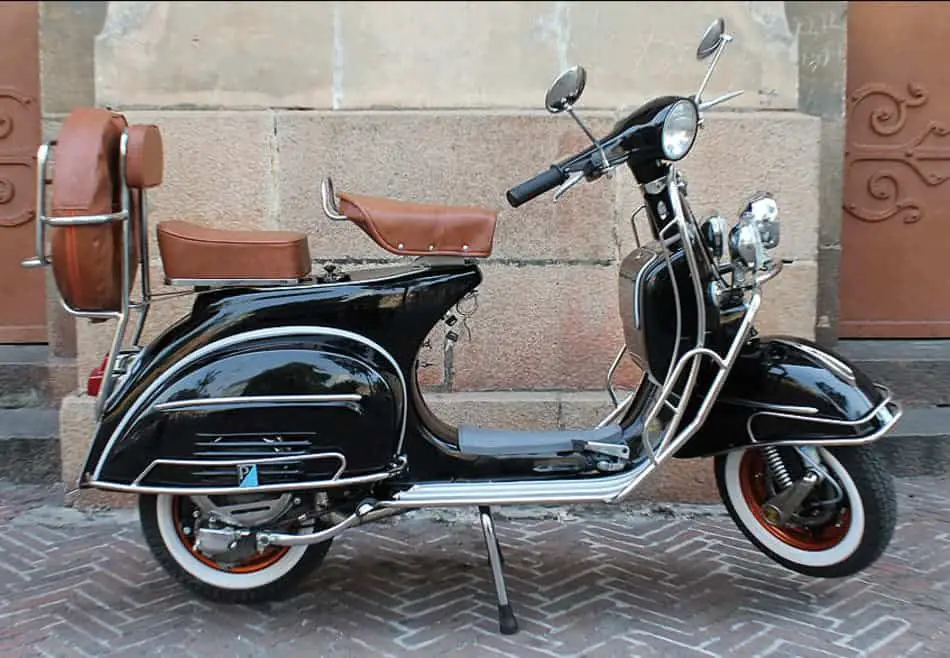
Another giveaway of a Vietnamese Vespa is the use of chrome. You will find this on the steering column, the leg shield, the mudguard, the cowls, the floorboard, the hubcaps, the exhaust pipe, the fork link cover, the lights, and mirrors. Accessories like the helmet hook and the luggage rack also often come in chrome.
When you take a look at a genuine Italian classic Vespa you will not find that much chrome. There might be some on the lights and mirrors, around the buttons and the luggage rack but that’s pretty much it. If it shines too much then step away from the scooter.
4. Colour of the seat, handlebar and rims
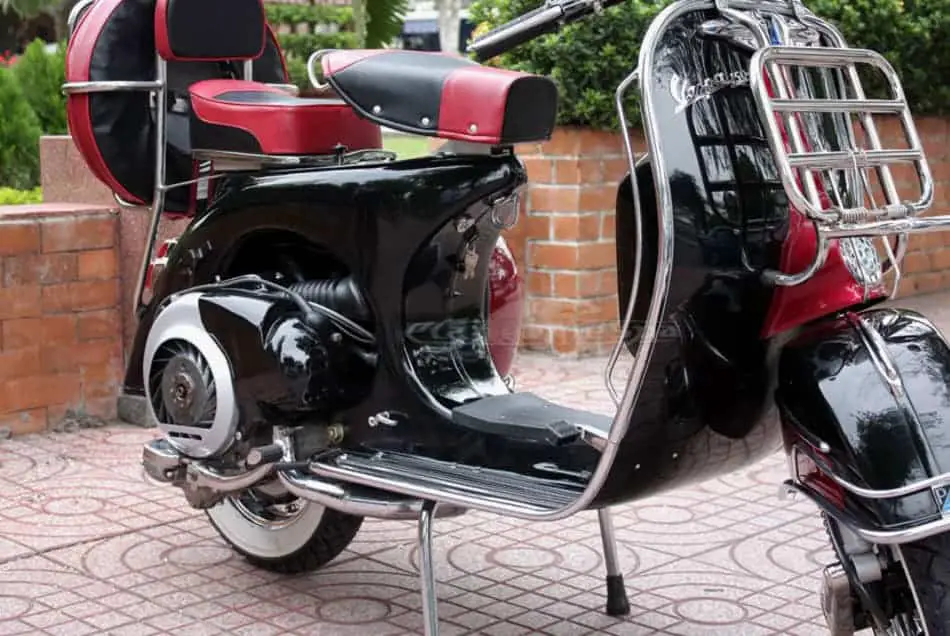
Only recently has Piaggio started with the production of colored seats for the modern Vespa Primavera and the Vespa 946 models. They always come in the color black, brown, or red but the seat of a classic Italian Vespa always comes in black. Unfortunately, this is not the case with Vietnamese scooters.
You can find them in various two-color tones, but also in Vietnamese red, even in white and they are also available in coffee brown and Burgundy red. None of these colors has been produced by Piaggio and so we are dealing here with imitations.
Another imitation example are the grips for the handlebars which are often too long. You can feel this when you squeeze the grips at the end. The rims on Vietnamese Vespas are also often painted or have rust (especially near the tube) while you will never find this on genuine classic Vespas.
5. Yellow boots on the center stand and often backward
If you take a look at the boots on the center stand you’ll see that they do not always come in the original black color but sometimes even in yellow. This is another clear indication you’re dealing here with a Vietnamese Vespa. They are often backward and when you take the scooter off the center stand it will result in damage to the paintwork on the floorboard. So have a look under the floorboard of the Vespa too if you can.
6. The speedometer is always new with few km
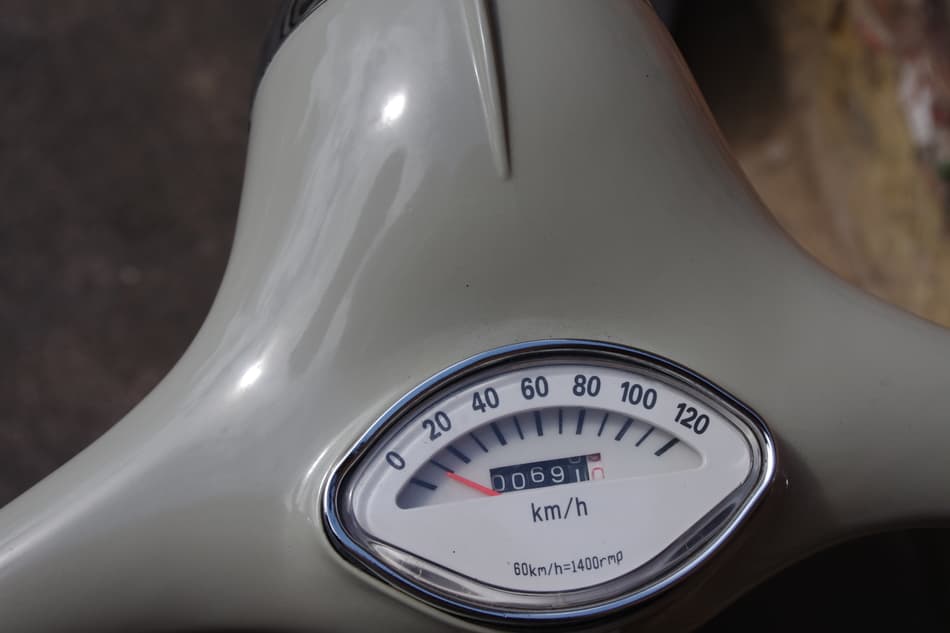
Another give-away is the speedometer on Vietnamese scooters. They are always brand new reproductions with few kilometers which is a joke considering these Vespas should be 50 plus years old. The quality of the speedometer is also something that should have your eyebrows raising. They often don’t fit properly, leak water, and are reproductions for different Vespa models.
7. The glovebox on the leg shield should not be there
On most of the classic Vietnamese Vespas, you’ll find gloveboxes on the leg shields. However, most classic Vespas from the ’50s and ’60ss never had any glovebox compartment on the leg shield. The glove box on the leg shield is something that Piaggio started to produce in 1972 when they launched the first Vespa Rally 180 model.
8. No reflector in the headlight globe
Another item that is often missing on Vietnamese Vespas but which is very important is the reflector in the headlight globe. This way you’ll miss out on a proper beam of light in front of the scooter when switching from low light to high light. This can lead to dangerous situations when driving in the dark. It is an inexpensive part to use but still has been omitted in many restored scooters.
9. Black rubber everywhere on the vehicle
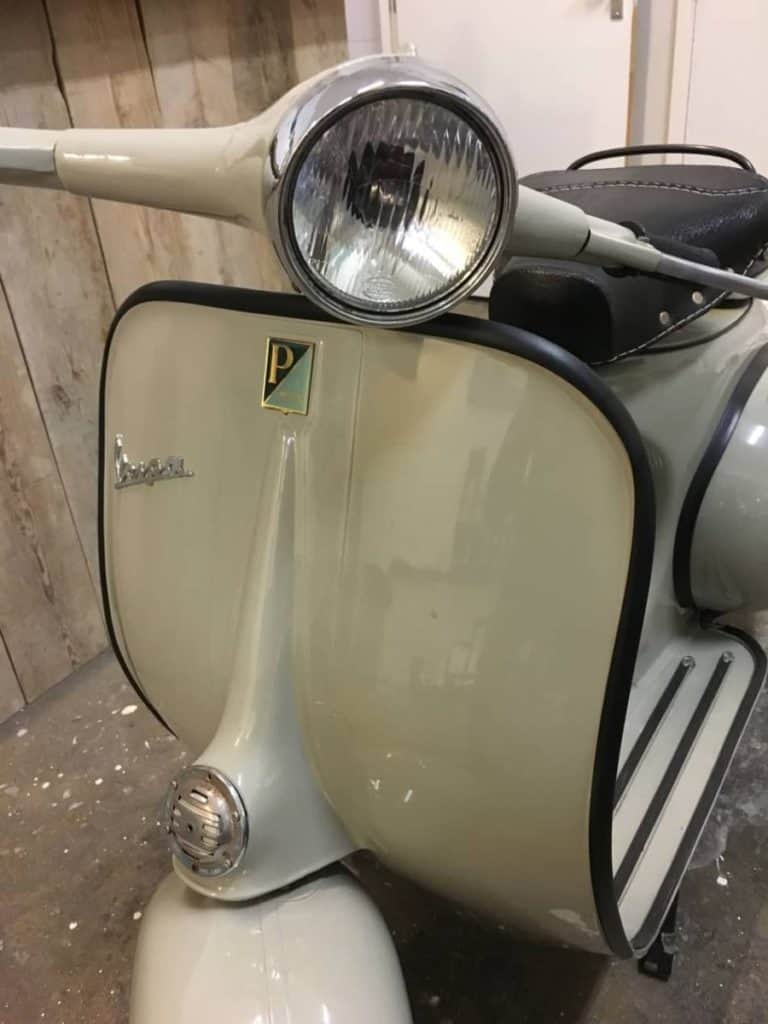
On most of the classic Vietnamese Vespas, you can find plenty of black rubber. You can find this lining around the glove box, the leg shield, the cowls, the floorboard, the tail light, and the petrol tank. The big rubber mat on the floorboard is also typical for classic Vietnamese Vespas.
Since the floorboard is one of the hardest parts to restore properly it’s not a surprise that they cover this up. This is the part where different Vespas have been welded together and where it’s very hard to get the paint done properly.
Therefore it’s easier to just use a big rubber mat to hide the fact that the monocoque frame has been stitched from several other Vespas. So when taking a first look at the Vespa you can’t see it but once you take it for a test drive you will feel it’s not as smooth as it should be.
10. Keys near the helmet hook
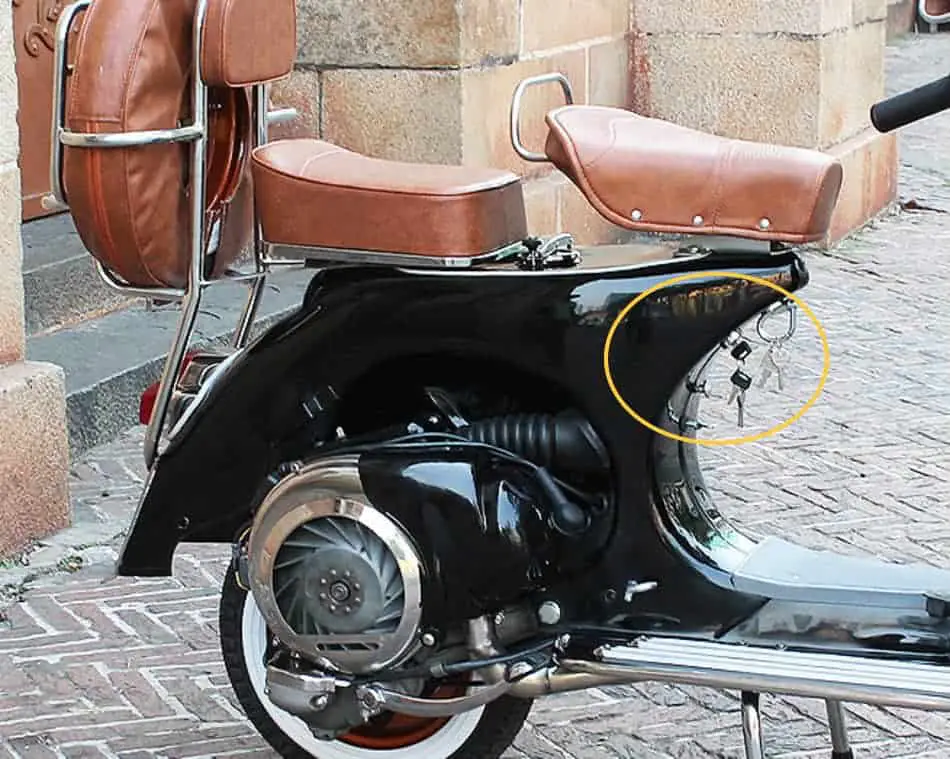
Another item that can tell you that you are dealing with a Vietnamese Vespa is the position of the keys near the helmet hook. Piaggio has never produced any of its Vespas with keyholes near this position. They were always made on the steering column, the glove box, or on one of the compartments on the cowl. Why the restorations guys from Vietnam have come up with this is still a mystery to me. Nonetheless, an easy give-away to recognize an imitation Vespa.
11. Hard to find cotter pins and incorrect cable pinch bolts
Cotter pins are essential parts of any classic Vespa. They keep the bolts in place and are often inserted through the hole of a bolt for extra security. On ‘classic’ Vespas from Vietnam, you need to take a thorough look to see what’s missing but when you take off the side cowls and take a closer look around the engine and rear-wheel you might be in for a surprise. They don’t use cotter pins in places where they should use cotter pins which could be extremely dangerous when riding these types of Vespas at high speed.
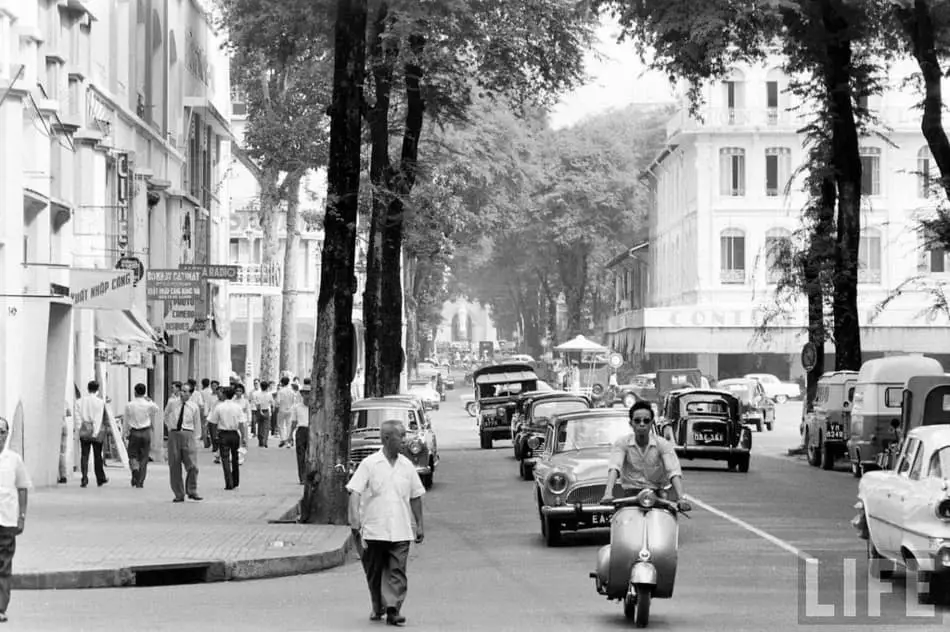
Other important parts that are often missing on restored Vietnamese Vespas are the cable pinch bolts on the brake and gear cables. For whatever reason, they use incorrect cable pinch bolts with high chances that your brakes and gears are not working after a while. That’s something you want to avoid at all costs when driving through traffic.
12. Vespa Leg shield out of shape
To get the leg shield of a classic Vespa properly restored takes a lot of time. Again the leg shield could be made from other Vespas and often they use Bondo which is a polyester filler. This Bondo is not only used on the leg shield but also on other parts of the Vespa. You can’t see it because of the paintwork but when you use a magnet you might find it. Also when you use your hand to get a feel of the leg shield you will find various waves.
Another sign of an incorrect restored classic Vespa is the part where the floorboard meets the leg shield. When you find ripples or it doesn’t look as smooth as it should be this Vespa could have been in a crash or rust got the best of it. Also, you’ll find that the proper outer floor rails are missing which is another indication of a poorly done Vespa.
13. The winged Vespa logo
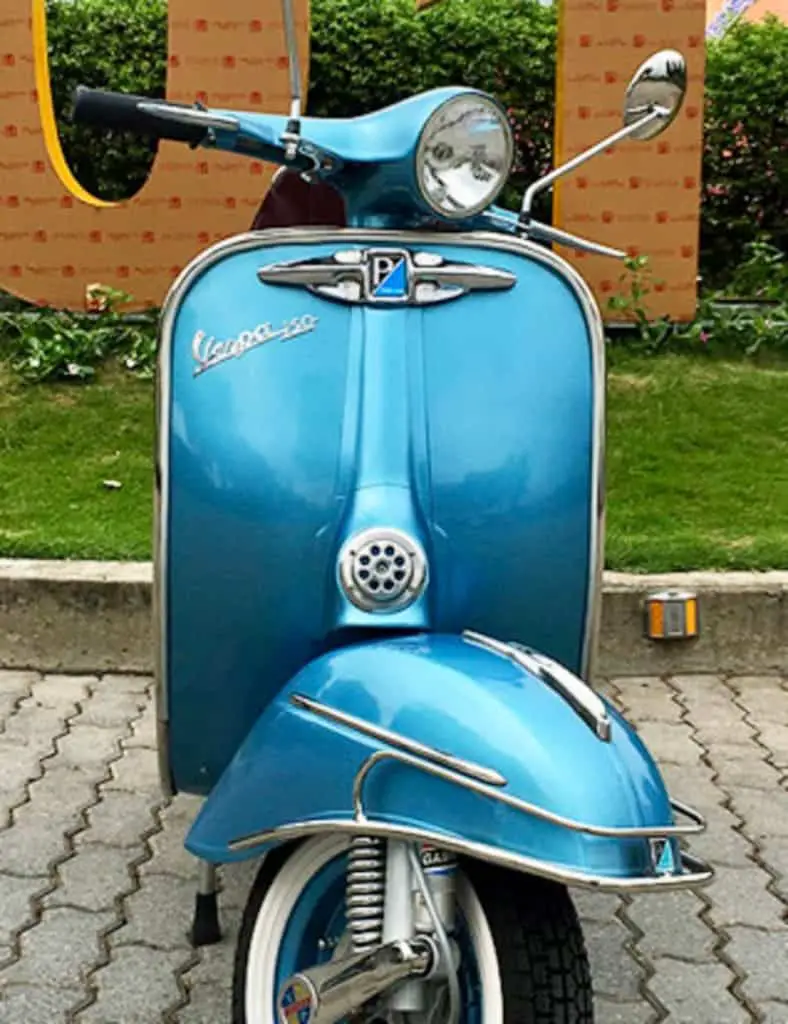
Vietnamese Vespas often come with incorrect Piaggio logos and you’ll find plenty of them all around the scooter. Popular locations are near the cowls, on the front fork cover, and the leg shield. Moreover, placing the winged Vespa logo on VBB/VBC/VLB Vespas is something these restoration shops in Vietnam came up with. Piaggio only produced the winged Vespa logo on their prototype scooter MP6 but never produced Vespas with this logo.
The only two logos that Piaggio has designed are the shield split into two sections with the letter P in the blue and the word “Piaggio” in the right corner. The other logo designed is the hexagon with the wings of a wasp or you can look at it as two P’s reflecting each other. Under these wings of a wasp sits the word “Piaggio”.
14. Brake levers of poor quality
At first glance, there’s nothing wrong with the brake levers on classic Vietnamese Vespas until you squeeze them. They feel cheap and are made out of poorly cast metal. Don’t be surprised that after a while they will snap or you’ll find early cracks near the area where the brake cable is installed.
Also, you will find that the brake levers and brake cables don’t have the correct mounting screws. Would you take any chances with such a scooter?
15. No lock washers and incorrect nuts and bolts
When taking a good look at the nuts and bolts of restored Vietnamese Vespas it’s the same story as under #15 on this list. Often they have used the incorrect nuts and bolts for the wheel parts such as the front brake actuator arm and the hub. When you take off the cowls and take a good look around the engine it’s the same story. Especially on the wheels, this can get tricky.
Moreover, cotter pins are not always used here either. Another common thing on these Vespas is the lack of flat, spring, and lock washers. Without these types of washers, pressure is unevenly divided and the nuts and bolts can move or corrode more easily.
16. The 10-inch wheels and adjusted front fork
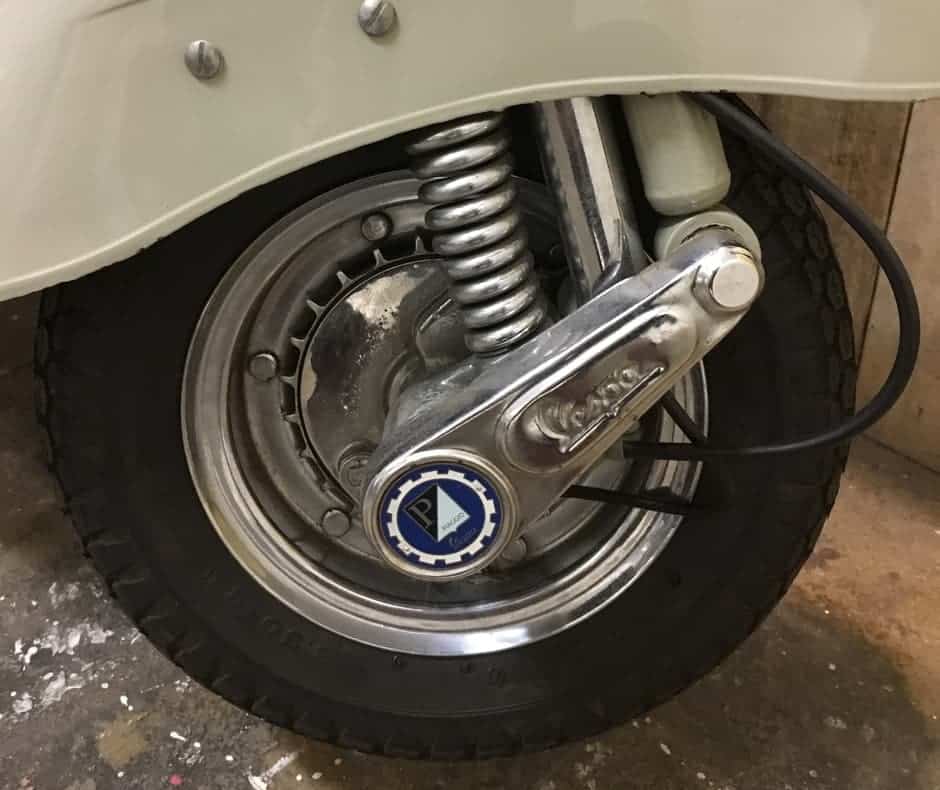
Most ‘classic’ Vietnamese Vespas have 10-inch wheels but they should be having 8-inch wheels. Most classic Vespas from the sixties were produced with 8-inch wheels while Vespas from the seventies got 10-inch wheels. You might think it’s not such a big deal but it actually is. When you change from 8-inch to 10-inch there are many factors that come into play if you want to have a good driving experience.
When you change from 8-inch to 10-inch you have to change the fork of the Vespa too otherwise your tire will hit the front fender which can be dangerous. Finding a classic Vespa fork is like finding a needle in a haystack, they are very rare. This means the Vietnamese had to come up with something else so they’ve reconstructed the fork and have welded it together with low-quality metal. This means if you hit a pothole a couple of times changes are your fork will snap like a twig.
Furthermore, when you change the classic Vespa with 8-inch wheels to 10-inch wheels you’ll have problems with the suspension, the gears, the brakes, the bearings, and how it drives overall. For the best driving experience, Piaggio knew what was needed so you have to keep it as original as possible. This means don’t change anything or face the consequences.
17. Rust in the fuel tank
Classic Vietnamese Vespas might look good from the outside but it’s more important what’s on the inside. One part that many interested buyers overlook is the fuel tank. Always before buying a classic Vespa you should take a look inside the fuel tank, it will tell you a lot about the scooter.
On poorly restored Vespas you will find rust in the fuel tank. It’s on the sides or you’ll find small rust particles on the bottom of the fuel tank. This can become a costly mistake because rust can get into the fuel line, the fuel tap, and the carburetor. When this happens you either have to clean everything again or you have to order new parts depending on the damage caused.
18. Piaggo license plate holder with fake numbers
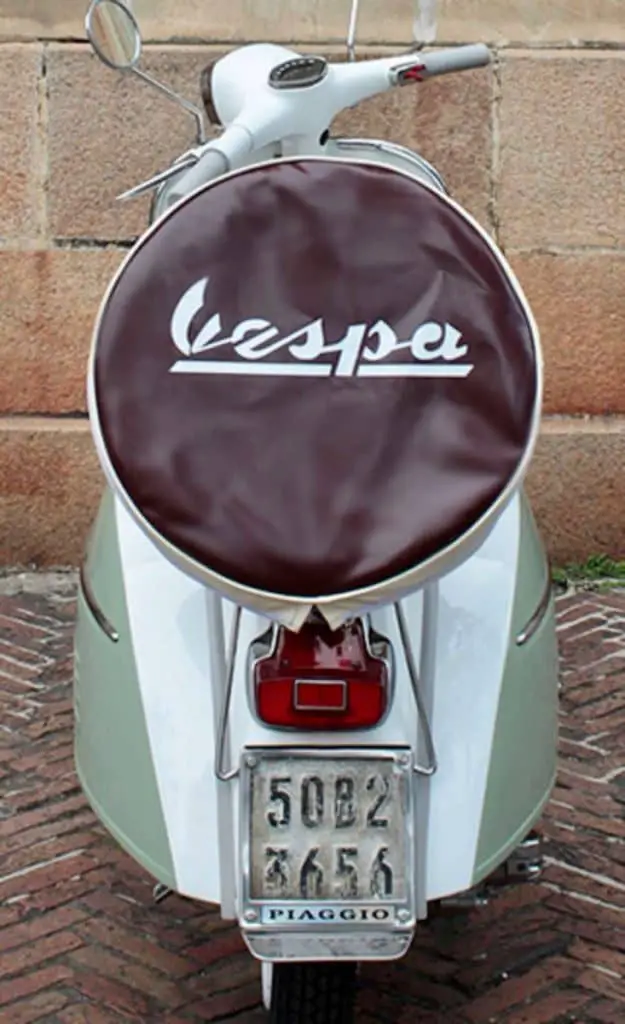
What you will often see with classic Vespas from Vietnam is that they use ‘genuine’ Piaggio license plate holders. Piaggio has never made any of these license plate holders. They are always in a brand new condition and are imitations. The only reason that I can come up with is to let the buyer believe that also this part comes from the Piaggio factory in order to create credibility.
The license plate holders contain vintage numbers and letters as if they miraculously have stood the test of time. You will see this on old Coca-Cola advertising signs too. It’s just a trick to make something new into something vintage. The license plate number has been made up and if they say it’s genuine just ask for the original owners’ history papers.
19. Stolen Vehicle Identification Number
When you are thinking of buying a classic restored Vespa from Vietnam it’s always best to check the vehicle identification number (VIN) and the engine number. You can check this on Scooterhelp or on Piaggio’s Vespa website. When you can’t find these numbers just walk away.
Then again if you happen to find it you still have to be careful. Why? Often classic Vietnamese Vespas are build from several Vespa frames and it’s easy to cut out the number and find it newly stamped.
20. Colored buttons on the handlebar
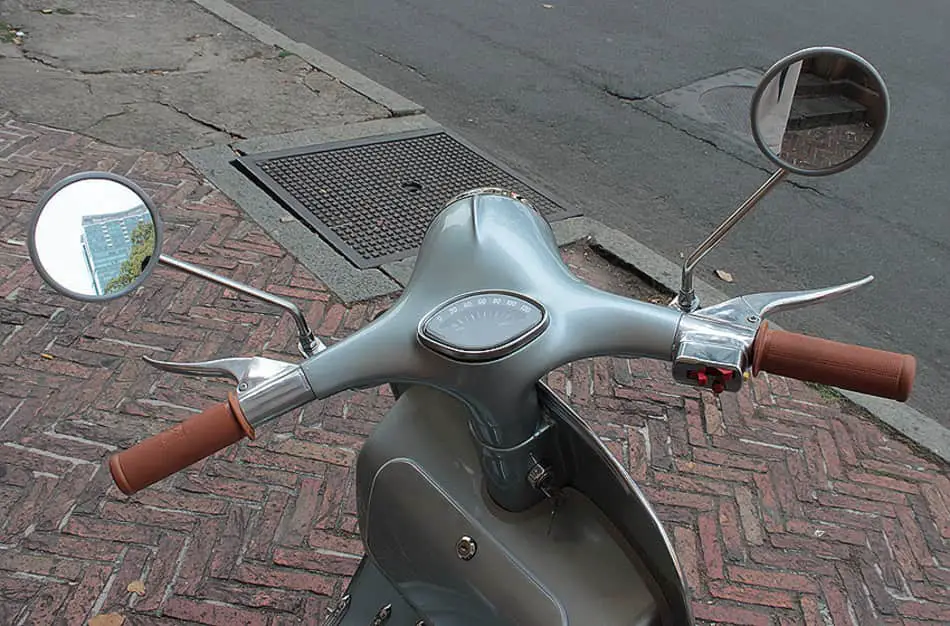
When taking a look at the handlebar of some Vietnamese Vespas you’ll find on the right side the button for the horn, the on/off light button, the low light, the high light button, and the kill switch. Funny enough they are in the color red with the kill switch in yellow while all of Piaggio’s original classic Vespas come with black buttons. Maybe the Vietnamese think it looks cool. Then again another easy example of a fake Vespa.
21. Engines not made of genuine parts
If there’s a lack of lock washers and cotter pins on the most important parts what will the engine look like? This is always tricky as you can’t see anything from the outside. But going through the stories on the Internet it’s clear-cut that also here Vietnamese Vespas are unreliable.
Often the engines are rebuilt with low-quality parts, incorrect parts, or used parts. Another common thing is that they have used the incorrect bolts and screws. These things together result in a short-lived and dangerous engine.
22. Vespa was only imported to Vietnam till 1955
The last item on the list is something you can’t see from the outside but is an important factor nonetheless. It has to do with the country’s history. Because of Vietnam’s history, it makes it impossible to find a properly well-restored classic Vespa.
The first classic Vespas that were roaming the streets in Vietnam came from the colonial power, France. They were produced under licence by ACMA (Ateliers de construction de motorcycles et accessoires) in Fourchambault in 1951. They were shipped to Vietnam and sold on the market until 1954 when France lost the First Indochina War.
Vietnam got its independence in 1954 and this is when Piaggio also saw the opportunity to sell Italian-made Vespas in Vietnam. They mainly exported the Vespa Sprint 150cc, the Vespa VBB 150cc, and the Vespa GS 150cc to the southern ‘democratic’ part of Vietnam. The north was controlled by the communists backed by China and the USSR.
The Second Indochina War took place from 1955-1975 where the USA fought the Vietcong and the People’s Army of Vietnam. After this gruesome war, Vietnam’s infrastructure and the economy were in ruins and Vietnam closed its borders. The Vespas that were left had to be maintained with whatever the Vietnamese could find. Spare parts were hard to get after 20 years of war.
What is left and what you can see on eBay, Craigslist, Facebook, or so-called genuine classic Vespa shops is now called the Vietnamese Vespa, Bodge, or Nammer. They look pretty but it’s the devil in disguise often made out of several Vespas welded together.
I hope you found this list useful. For those who are just starting out and have a dream of owning a real classic Italian Vespa please be aware. It would be such a shame if you spend your hard-earned cash on fake Vespas while you can have the real deal too. Most fake Vespas from Vietnam sell for around $2.500-3.500 US. It would cost you around $3.000 US extra for a real classic Italian Vespa (so a total of $6.500 US). These will come with genuine parts, maintenance history, keep their value, and will be worth even more in the future.

